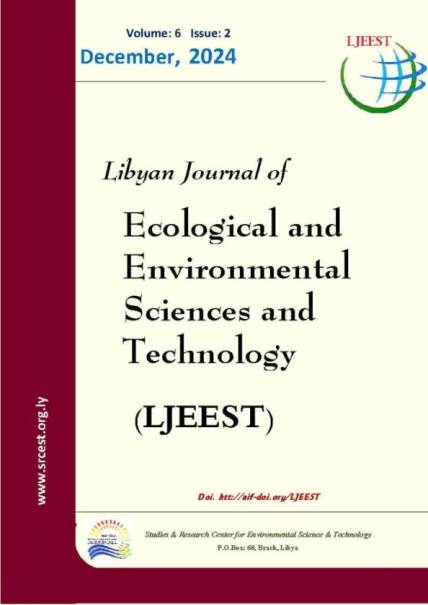Hydrochemistry and Water Quality of Tazerbo Wellfield, Line 300, SE Libya
DOI:
https://doi.org/10.63359/kqvp4j67Keywords:
Geochemical processes, Irrigation uses, Drinking water, Tazerbo Wellfield, SE LibyaAbstract
Some areas in Libya depend on municipal water wells, which extract water from nearby shallow aquifers, besides water from the Great Man-Made River, which is considered the largest source of drinking water in Libya, as well as some desalination plants. The main work of this study is to understand the most significant geochemical processes controlling groundwater quality and to evaluate the groundwater quality criteria for irrigation and drinking of Tazerbo Wellfield, Line 300, SE Libya. The nine groundwater samples were taken from nine wells numbered from (310–318) in the studied wells. The Great Man-Made River Authority's lab performed the analysis of water samples. There are three aquifers in studied wells: shallow, intermediate, and deep. The result showed the studied ground water was characterized by fresh water (Na Ca HCO3 type). All the parameters of irrigation, such as EC, SAR, KR, Na%, and PI, are good to excellent for irrigation uses. The origin of major ions weathered from silicate rocks. The concentration levels of (Mn) and (Fe) are above the acceptable limit for drinking water and should be treated before pumping to the pipelines. The pH in the studied water is considered acidity water, and it is classified as mainly somewhat corrosive. Many tools have been used to remove these contaminants (e.g., oxidation with chlorine, ozone, or green sand filters).














